Hello everyone,
With Finals Week upon us, the spring semester is coming to a close. What a ride it’s been this semester. We’ve seen a homemade CNC built in a student’s garage, a 3D printing workshop at Heartland Point, two wheeled skateboards, an Arduino bicycle brake light system, numerous offsite presentations, the birth of our Electronics Station, and our affiliation with the new Route 30 Corridor Makerspace Ecosystem (courtesy of The Schantz Organ Company).
It amazes me with how far the Wayne College 3D Lab has come in two short years. When I walk into the room to find students talking animatedly about inventions they are working on, I know that Wayne College does a good thing for them; we are sparking their imaginations. Our connections with community our invaluable; the success of the lab is made possible by its support.
Speaking of sparks, we had one of the most entertaining rocket launches in a while! Engineering students in the Dynamics class spent a semester building models, testing them in wind tunnels, performing physics calculations, etc. On Launch Day, their designs are put to the test.
A number of students made rockets using 3D printers such as the ones below:

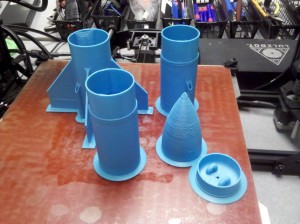
The white rocket in particular was interesting as the student mixed his own engine fuel and used acetone to smooth the rocket’s body, giving it a sleek, glassy look.
Other rockets were constructed with traditional methods such as cardboard tubes, balsa wood fins, even pop cans!
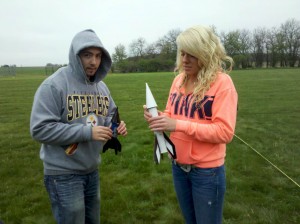
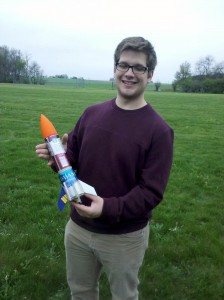
The rocket that “stole the show” was a monstrosity of a machine, a 5-1/2-foot rocket made by Wade Darr. Everything about this rocket was heavy duty, from its giant, 3D printed nosecone to heavy wood fins, PVC engine holster, and carpet-storage cardboard tubing. Wade also mixed his own rocket fuel and performed at least 20 “test burns” at his parent’s home before Launch Day (yes, the house is still standing). Watching it launch was like watching the Space Shuttle at Cape Canaveral!
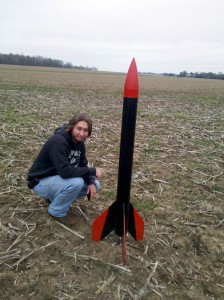
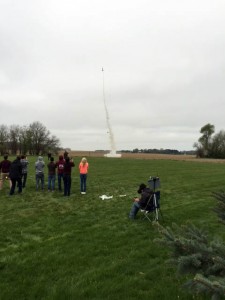
For the first time, Chris from the Wayne College Flight Club used a drone to record the launches. Wearing a virtual reality headset, he watched and recorded launches from the air using a tri-copter outfitted with a GoPro camera. You can watch the launch of the “monster rocket” here (about 40 seconds into the video). It was an exciting Launch Day!
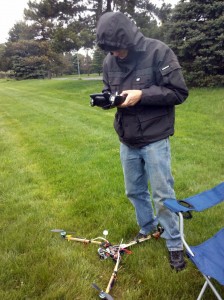
David made excellent progress with the handheld game console that he started building earlier this semester. The console is finished and works wonderfully! The case and buttons were 3D printed, the screen was ordered at AdaFruit.com, and the “brains” of the console are provided by a tiny Raspberry Pi single-board computer running Linux. The project involved a lot of soldering wires, connecting the battery pack, and salvaging old game controller parts to fit into the small console. But the result was worth it and works wonderfully!
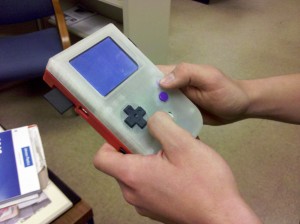
Now David is immersing himself into Arduino microcontrollers for future projects. These are low-cost “computers” without a screen, keyboard, or mouse. They are used to control hardware, such as Ben’s CNC homemade machine, sensors, and other projects. To get an idea for what’s possible, search for “Arduino” on www.instructables.com. You will be amazed!
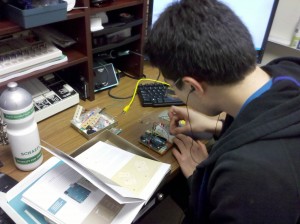
A couple of months ago, we were honored to demonstrate 3D printing to a couple of fifth grade classes at Wadsworth Central Intermediate School. The kids were so excited that they talked about the presentation for weeks! We were invited back to talk about 3D printying and careers in enginnering to the rest of the fifth grade students, all 300 of them. Ten 45-minute sessions were given, each a flurry of excitement and a continual barrage of questions. And many wanted to visit the Wayne College 3D Lab as soon as their parents would let them. 🙂 We are proud to have this connection with Wadsworth Schools and look forward to future collaborations.
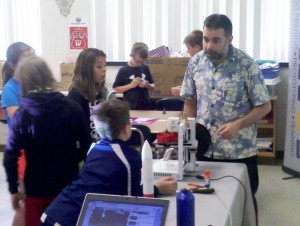
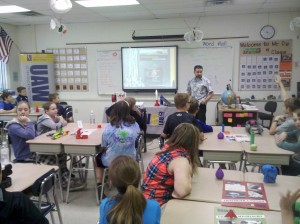

See how this robot 3D prints metal bridges in Amsterdam:
http://www.popsci.com/bridge-printer
Speaking of big things, see how this concrete 3D printer builds a castle:
http://www.totalkustom.com/3d-castle-completed.html
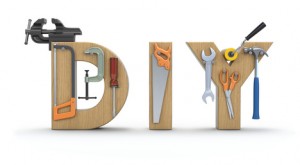
An infinity mirror is a pair of mirrors, set up in a recursive manner, creating a series of smaller and smaller reflections that appear to recede into an infinite distance. They are used as room accents and in artwork. Here is how you can make your own!
http://www.instructables.com/id/How-to-Make-an-Infinity-Mirror-Box
Until next week,
Tom
